
Mantua is a city and comune in Lombardy, Italy, and capital of the province of the same name.
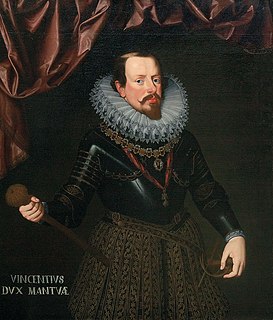
Vincenzo Ι Gonzaga was ruler of the Duchy of Mantua and the Duchy of Montferrat from 1587 to 1612.
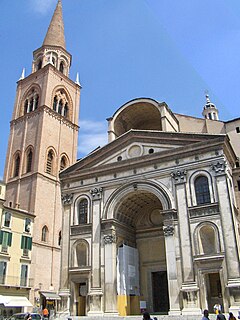
The Basilica of Sant'Andrea is a Roman Catholic co-cathedral and minor basilica in Mantua, Lombardy (Italy). It is one of the major works of 15th-century Renaissance architecture in Northern Italy. Commissioned by Ludovico III Gonzaga, the church was begun in 1472 according to designs by Leon Battista Alberti on a site occupied by a Benedictine monastery, of which the bell tower (1414) remains. The building, however, was only finished 328 years later. Though later changes and expansions altered Alberti's design, the church is still considered to be one of Alberti's most complete works. It looms over the Piazza Mantegna.

The Archdiocese of Bologna is a Latin Church ecclesiastical territory or archdiocese of the Catholic Church in Northern Italy. The cathedra is in the cathedral church of San Pietro, Bologna. The current archbishop is Cardinal Matteo Zuppi, who was installed in 2015.
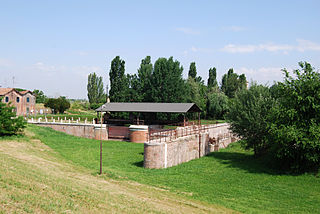
Roncoferraro is a comune (municipality) in the Province of Mantua in the Italian region of Lombardy, located about 140 kilometres (87 mi) southeast of Milan and about 11 kilometres (7 mi) southeast of Mantua.

The Diocese of Mantua is a Latin Church ecclesiastical territory or diocese of the Catholic Church in Italy. The diocese existed at the beginning of the 8th century, though the earliest attested bishop is Laiulfus (827). It has been a suffragan of the Archdiocese of Milan since 1819.

The Diocese of Lodi is an Italian Roman Catholic territorial entity that existed since the 4th century; it is a suffragan of the Archdiocese of Milan.

The Diocese of Treviso is Latin Church ecclesiastical territory or diocese of the Catholic Church in the Veneto, Italy. It is a suffragan diocese in the ecclesiastical province of the metropolitan Patriarchate of Venice.

The Italian Catholic Diocese of Carpi is in Emilia Romagna, Italy. It is a suffragan of the Archdiocese of Modena-Nonantola.

The Belfiore martyrs were a group of pro-independence fighters condemned to death by hanging between 1852 and 1853 during the Italian Risorgimento. They included Tito Speri and the priest Enrico Tazzoli and are named after the site where the sentence was carried out, in the valley of Belfiore at the south entrance to Mantua. The hanging was the first in a long series of death sentences imposed by Josef Radetzky, governor general of Lombardy–Venetia. As a whole these sentences marked the culmination of Austrian repression after the First Italian War of Independence and marked the failure of all re-pacification policies.

Renato Corti was an Italian cardinal and prelate of the Roman Catholic Church. He was Bishop of Novara from 1990 to 2011. Pope Francis raised Corti to the rank of cardinal on 19 November 2016.

Francesco Gonzaga was an Italian bishop and a Cardinal of the Roman Catholic Church during the reigns of Popes Pius II, Paul II and Sixtus IV.
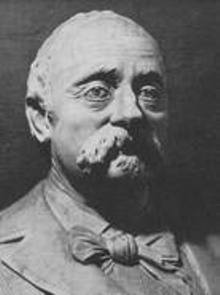
Paride Suzzara Verdi was an Italian patriot, journalist and politician.

Enrico Tazzoli was an Italian patriot and priest, the best known of the Belfiore martyrs.
Giovanni Battista Bellé was an Italian priest who became Bishop of Mantua, based in the city of Mantua, Italy.
Giuseppe Maria Bozzi was an Italian priest who became Bishop of Mantua, based in the city of Mantua, Italy.
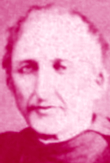
Pietro Rota was an Italian priest who became Bishop of Mantua, based in the city of Mantua, Northern Italy. He was given the mandate of restoring the diocese to obedience to the Pope after succeeding a popular liberal bishop who had supported Italian unification and the surrender of the Pope's temporal powers. He was harassed by the civil authorities, and was not allowed to take his seat.
The following is a timeline of the history of the city of Mantua in the Lombardy region of Italy.
Giorgio Andreasi (1467–1549) was a Roman Catholic prelate who served as Bishop of Reggio Emilia (1544–1549), Apostolic Nuncio to Venice (1540–1542), and Bishop of Chiusi (1538–1544).
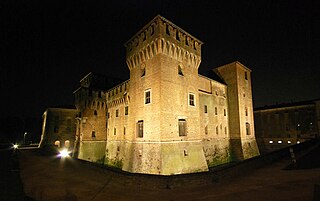
The Castello di San Giorgio is part of the Ducal palace of Mantua. It is a moated rectangular castle, each of which's four corners has a large tower and the moat is crossed by three drawbridges.
















